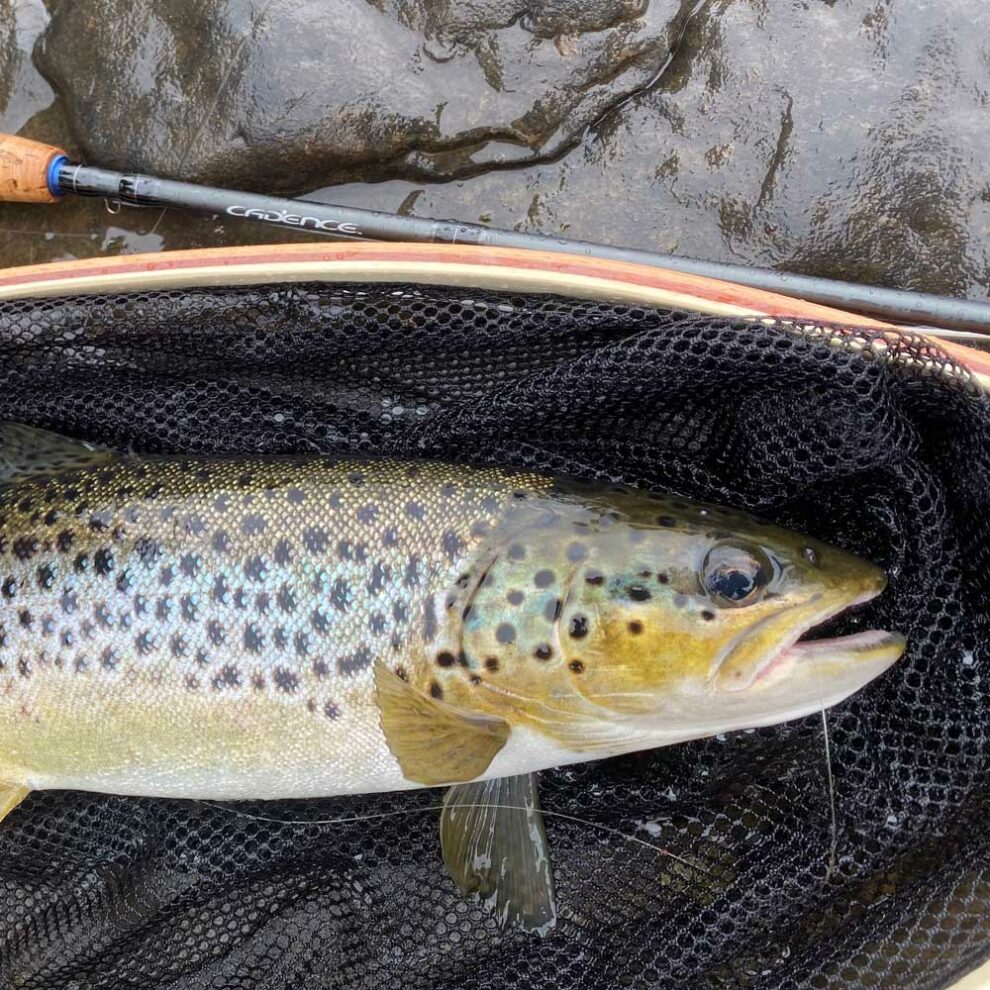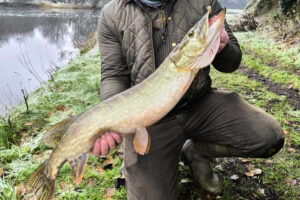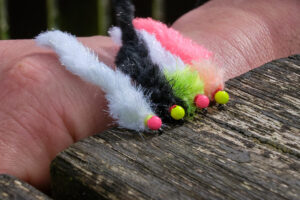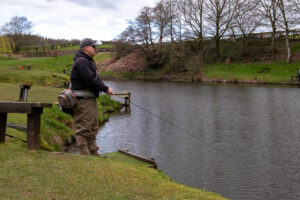“Character like a photograph, develops in darkness.” — Yousuf Karsh.
At the time of writing, it is winter, the snow is battering against my window and my disposition at times like the passing days can be dark. Perhaps I do truly suffer from SAD or seasonal affective disorder, this condition has something to do with melatonin, darkness, short bleak days and makes many of us, well, just a little blue or despondent.
I do get melancholy in winter, one reason is unquestionably, I crave walking, wading, and fishing on wild rivers. I yearn for the streams, rivers and loughs, wonderful places where I can immerse myself in nature and hopefully cast to a rising wild brown trout, which takes all my concentration and un-clutters the mind.
Occasionally, I do suffer from a situation many of us will know as, cabin fever, especially during the closed season. So, I tell myself, stay strong Munn, be positive, the days are getting longer, it is getting warmer, remember we have endured this before many times and the fishing gods be praised the fly fishing season is on the horizon.
So, what can we expect? In my part of the world, proceedings start on the first of March, when I can once again roam the local rivers. The Large Dark Olive normally brings the first good wild brown trout fishing for many river anglers. This will occur in March and April, weather conditions permitting. Early season fishing can be often difficult, nevertheless, if you are lucky, you may get a hatch of Baetis Rhodani which is the elaborate fancy Latin name for the Large Dark Olive (LDO’s). I must state knowing the Latin names of the odd insect won’t help you catch fish, but some fly fishers like that sort of thing, so I thought I would add it. What is more, if you have an interest in Entomology, can I suggest an old book and favourite – Trout Fly Recognition by the late great John Goddard.
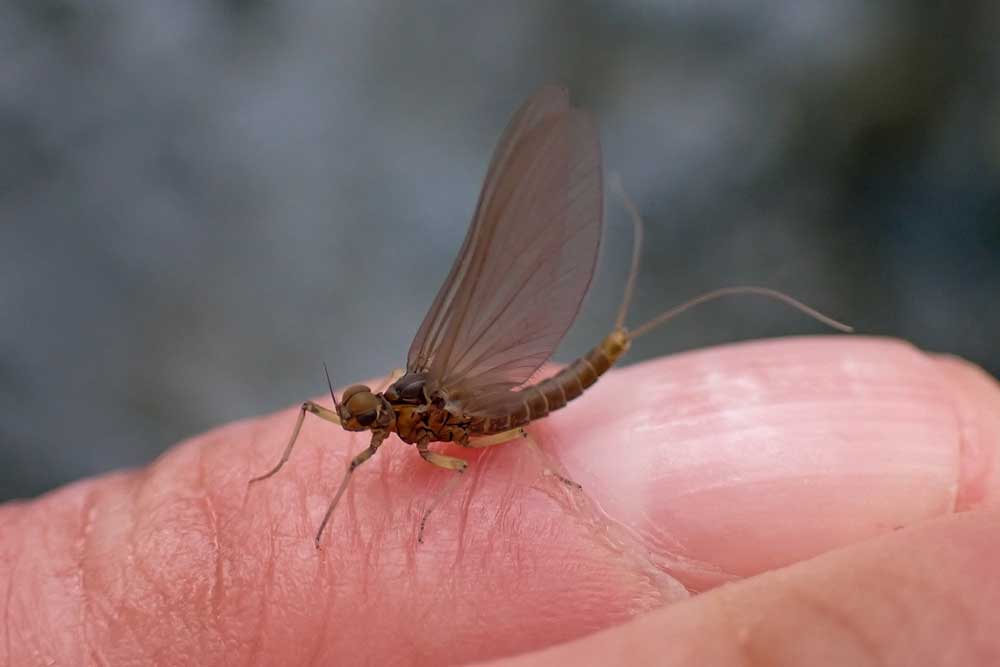
The LDO is an aquatic insect of flowing water, which can live in steep stony rivers as well as in weed-rich chalk streams. The adults or Duns can typically be seen hatching during the cold months of late autumn and into winter, but most importantly for the trout angler they hatch in early spring when, very few other aquatic flies are about to temp the trout to feed on the surface.
Like a lot of successful fishing, you need to be there at the right time and remember, in the spring, your window is brief. So, you really try to time yourself to be on the river at the warmest part of the short day. I normally aim to get to the river about 11am as I know that my best time to intercept a hatch, which should happen from noon until about 2.30pm or perhaps 3.30pm on a milder day. You could call this time “the Trout’s opening hours” so you would think that it is easy just to turn up at the right time and bingo you are in. One problem can be that LDO’s can be slightly unpredictable and at times the hatches are often localised and sometimes sparse.
So from a fly angler’s perspective, do you stick with a place you know has worked in the past, hoping it’s going to happen again, or do we go looking on other stretches of the river? This can can be time-consuming, although there maybe a hatch happening and the trout are steadily feeding on them. Normally, I try about three stretches of river I know and hope that one of them pays off dividends. If one is productive, I stay there and try to put out of my mind the other spots. It’s no good wondering what is going on in another piece of water when you should be concentrating on the water that you’re fishing. If you are fishing well, you should be totally consumed in what you are doing.
The dry fly is my preferred way to fish. However, I am certainly not a purist or dry only man.
If you don’t get a hatch of LDO’s, you may be better trying different tactics like wet fly, streamer fishing or possibly, more productive at times, nymphs this depends on water conditions, of course.
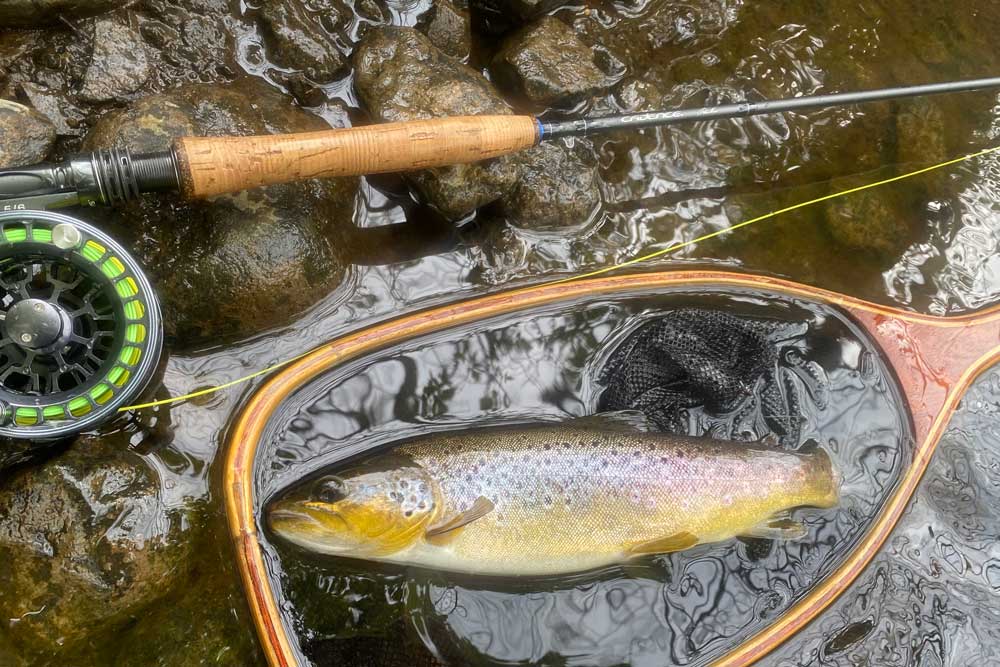
A good nymph for imitating LDO’s is a Pheasant Tail Nymph, I fish it on the point, and I always like a Greenwell spider on the dropper. However, sometimes at this time of year you need to get down deep as the trout can be hard on the bottom. This is when nymphing with heavy flies can produce. Fly dressers have been adding weight to flies for years with lead or a brass bead. This reminds me, I once travelled to Finland many years ago with friends Tom Woods, Richard Sheard who runs a fishing travel business and well-known fly angler Hywel Morgan. I remember the guides would not leave to go fishing without lead spilt shot and would say with a smile that it is almost the most important fly in the box. This has changed in the last few years, tungsten-beaded flies have become a revelation as you can get down to the fish when they are not feeding on the top. These heavy flies in varied sizes can work very well fished on a dead drift in Czech or French nymphing style. A word of warning, I have seen while guiding in Norway rods broken by casting heavy tungsten flies. So, when using these heavy patterns, be careful, you don’t want a bead head rattling off your favourite fly rod at speed.
The Dry Fly
Let us talk a little about some basic tactics and the dry fly on rivers. An artificial dry fly that copies or imitates something that the trout are feeding on is presented to a rising fish, usually, matching the hatch, as anglers say. Although you can also use a dry fly to search the water for fish and often, I do this by casting at likely looking spots trying to make a trout rise. I am always surprised how many trout you can rise at times when no fish are rising to naturals.
The fly should be cast or presented to a fish in a way that the fish is unaware of the angler or any casting action they are making, we are trying to get our fly to behave like a natural food item or to give the impression to a fish that it is edible. The late American fly fishing master, Lefty Kreh, understood the importance of this with his excellent book, ‘Presenting the Fly’, which is well worth a read.
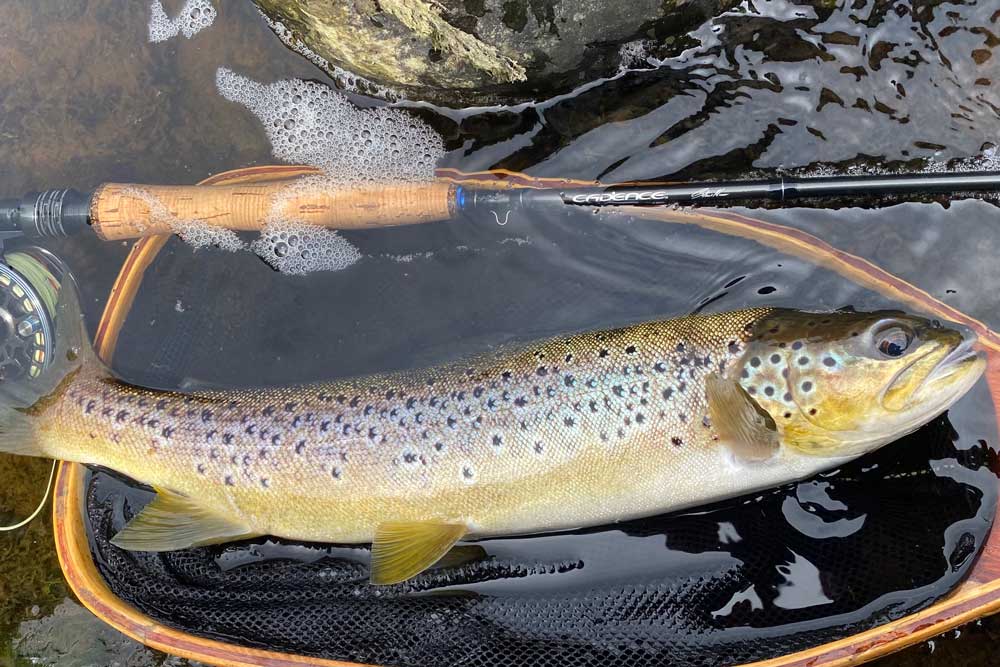
The first lesson to being successful is trying to be stealthy, so not to scare or alert the fish, and you don’t want to fish too heavy. Rods perfect in the Cadence range of rods for this type of river fishing are the CSM 9’ #4, CSM 9’ #5 or a versatile CSM 10’ #3 or CSM 10 #4, or indeed, if you fish small streams a smaller rod like the CSM 8‘ 6” #3 maybe better. If you fish a large windy river, the CSM 10’ #5 is a great tool and the rod I will be using while in Norway for grayling on rivers like the Trysil and Glomma.
Okay, back to being stealthy, this will help you catch more fish and is really a top tip. Walk softly, trout are as sensitive to noise and vibration as they are to visual warnings. Walk lightly on the riverbank and try to wade slowly and quietly, these are particularly important tactics. Remember, you are trying to fool a wild animal that you are not around. I recall when I was fishing with my father when I was little, as young as 6 or 7 years of age, he taught me a valuable lesson about staying quiet.
I was excitably running along the Sixmile water river in Co Antrim without a care in the world, when he barked at me, “move slowly, walk lightly son, trout can bloody well hear you know”. I thought the old man was losing his marbles. Trout do not have ears they can’t possibly hear, I have seen them. Back then I did not know about something called lateral lines, the sensory organs which run along the body of the fish, which they use to detect movement and vibration in the surrounding water.
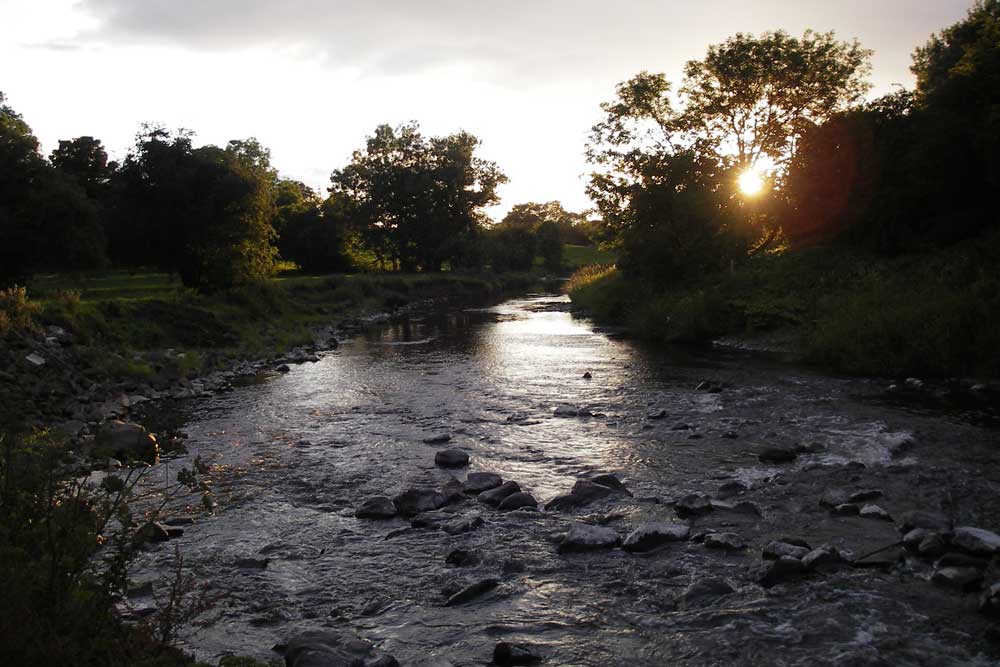
Later that night, while I was having a bath, he came into the bathroom and pushed my head under the water, while banging the side of the bath with his fist. He then let me up for air (thankfully) and announced, trout can see better than us, they hear and feel vibrations, remember that son. My father was a product of his place and time, and I am certainly not condoning half drowning your children while teaching them to fish, merely that lesson stuck in my head since the 1970s, and it certainly made me catch a lot more trout in my life. So, remember, stay quiet, walk, wade and cast as light as you can. It is certainly one of the most important things and makes a good angler a great one with the dry fly, or for that matter, any type of fly fishing.
Furthermore, and I apologise if this sounds obvious. Use dull clothing to match your background. Try, when possible, not to stand against the skyline and once you get into position, take your time. Watch for any feeding activity on the surface, this gives you time to plan your hopefully stealthy approach and if more than one fish is feeding, which one to target first.
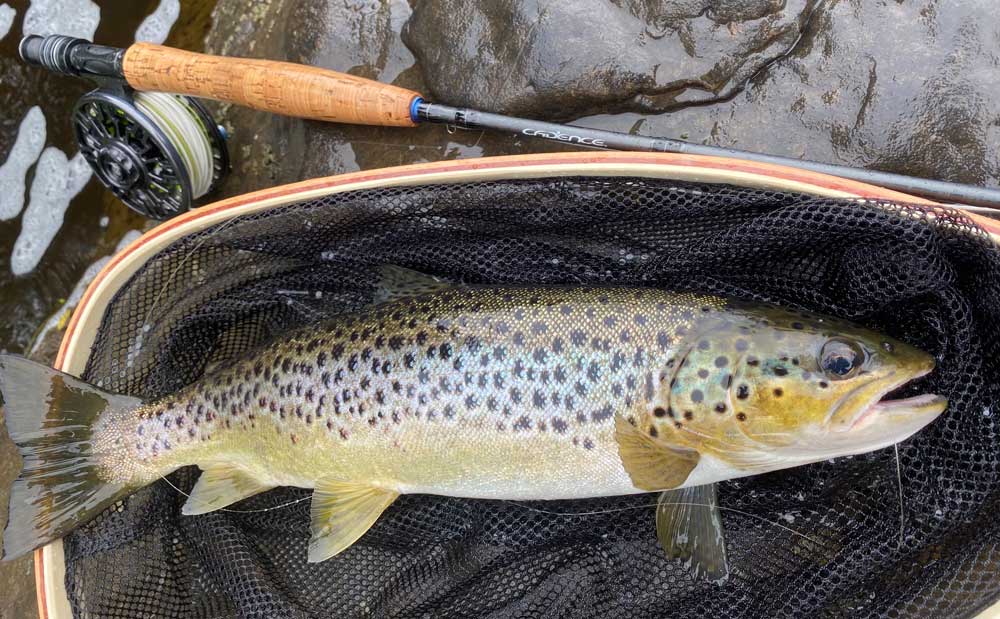
For good dry fly presentation, it is better if the tippet is tapered, I like the Varivas Tapered Leaders then an O ring, and attached to this a length of tippet. The dry fly must be cast and fished to copy the behaviour of natural insects. Many of these insects sit on or in the surface film and are carried naturally by the stream to the trout. To imitate these insects that are riding on the surface currents, the angler must make, at times, river presentation casts with mends. These casts are to ensure there is enough slack in the line, so the fly does not cause drag unnaturally. Fly fishers therefore try to eliminate drag, caused mostly by the currents in the river and the fly line, leader and tippet dragging, we always aim for a drag free drift. The drift is the distance the fly travels downstream without dragging. When the presentation is good, and the fly is drag free, the trout will sometimes, and I stress, sometimes be fooled. These casts are easily learnt and are made by mending or repositioning your fly line.
The dry fly, certainly for me, and many others, is the most enjoyable form of fly fishing, it’s my favourite method. I really look forward to discovering wild trout feeding on Olives. As I said, I am not a purest and enjoy many kinds of fly fishing. However, nothing much beats casting to a feeding fish. Watching your fly line unroll. The fly lands lightly onto the river, and if you’re lucky, it drifts without drag. Then a feeding trout rises to take your fly. You time your lift. You tighten. You hook that trout. It’s exciting, beautiful, and visual, and I cannot wait until it happens again.
Tight lines, safe wading and boating – Stevie Munn
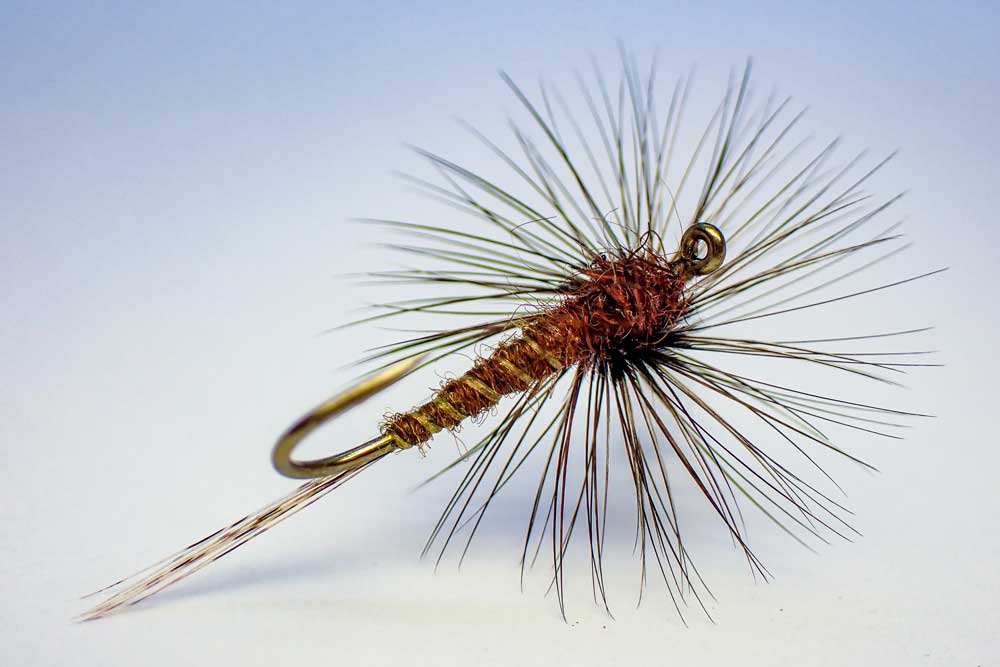
THE LDO by Gareth Lewis
- Hook: Straight-shanked dry fly, size #14 -#16
- Thread: Semperfli Nano Silk, 30D, olive
- Tails: Whiting Farms Coq de Leon
- Body: Snowshoe Rabbit dub, light brown
- Rib: Semperfli Waxed Thread, doubled, yellow
- Thorax: Snowshoe Rabbit dub, light brown
- Wing Post: Tiemco Aero Dry, white
- Wing: Whiting Farms Rooster, speckled badger

